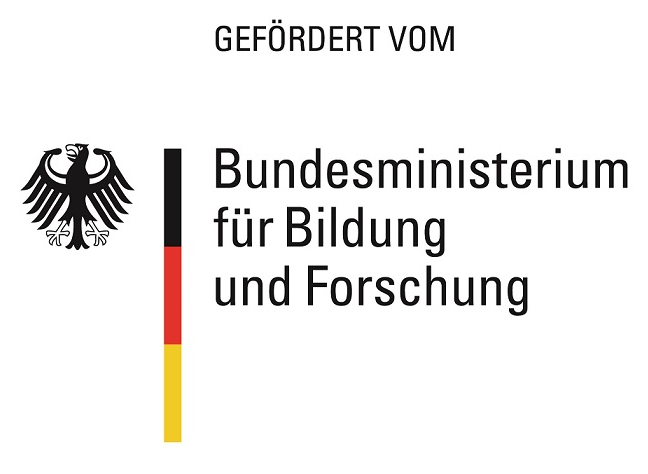Veröffentlichungen
| [1] | Peter, M.; Halwas, M.; Schigal, W. & Fleischer, J. (2017), „Entwicklung eines serienflexiblen Wickelverfahrens“. 9. Expertenforum Elektrische Fahrzeugantriebe, Hrsg. Forschungsvereinigung Antriebstechnik e.V. (FVA), S. 91-94. Abstract Die Anforderungen an E-Motoren für den automobilen Einsatz unterscheiden sich von den industriellen deutlich. Für automobile Anwendungen besteht noch sehr großer Optimierungsbedarf. Hierbei gilt es, unter anderem den Wirkungsgrad, die Leistungsdichte und das -gewicht weiter zu verbessern. Im Stator des E-Motors wird das magnetische Drehfeld erzeugt. Diese Komponenten bestimmen daher in hohem Maße sowohl die Leistungs-, als auch die Qualitätskenngrößen und werden im Folgenden näher betrachtet. Aufgrund der höheren Motordrehzahlen, die bei der Anwendung in vollelektrischen oder parallel-hybriden Fahrzeugen auftreten, hat sich der Vollblechschnitt als vorteilhaft erwiesen.
Aufgrund der größeren Relevanz für künftige E-Antriebe fokussiert sich die hier vorgestellte Arbeit auf neue Wickelverfahren für einen Vollblechschnittstator zur Verbesserung der Qualitäts- und Leistungskenngrößen. Ziel ist hierbei die Reduktion der Kupferverluste, die durch die Wicklungsart beeinflusst wird. |
|
| [2] | Halwas, M.; Hofmann, J.; Fleischer, J.; Riehm, C.; Spieker, C.; Fister, M.; Stoehr, G.; Wist, A.; Sell-Le Blanc, F.; Weiße, L.; Jovanovski, J. & Kehl, N. (2018), „Entwicklung eines parallelen Technologie- und Produktentwicklungsprozesses“, wt Werkstattstechnik online, Nr. 5, S. 301-306. Abstract In dem folgenden Artikel wird die parallele Technologie- und Produktentwicklung am Beispiel der Wicklungsauslegung und -fertigung beschrieben. Diese findet im Rahmen des Förderprojektes NeWwire (Neuartige serienflexible Wickelverfahren für die wirtschaftliche automatisierte Fertigung von hoch performanten elektrischen Maschinen) statt. Ziel des Forschungsprojekts NeWwire ist die Entwicklung sowie Auslegung eines neuartigen Wickelverfahrens zur automatisierten Fertigung von Elektromotoren im Hochleistungsbereich für den automobilen Einsatz. Hierbei stellt die effektive Wicklung im Stator zur Leistungssteigerung eine besondere Herausforderung dar. |
|
| [3] | Halwas, M.; Binder, D. & Fleischer, J. (2018), „Systematische Analyse des Lagenaufbaus von Wicklungen in Nuten elektrischer Maschinen mittels räumlicher Bildgebung und maschinellen Lernens“, www.umformtechnik.net, S. 1-10. Abstract Der vorliegende Beitrag stellt einen neuartigen Ansatz vor, den Lagenaufbau innerhalb einer Wicklung systematisch zu analysieren. Hierbei wird die Computertomographie als bildgebende Prüfmethode angewandt. Prinzipien des maschinellen Lernens befähigen einen entwickelten Algorithmus zur benötigten Datenverarbeitung und Auswertung.
This article presents a new approach to systematically analyse the layer structure within a winding. Computed tomography is thereby used as an imaging test method. Principles of machine learning enable a developed algorithm for the required data processing and evaluation. |
|
| [4] | Halwas, M.; Ambs, P.; Marsetz, M.; Baier, C.; Schigal, W.; Hofmann, J. & Fleischer, J. (2018), „Systematic Development and Comparison of Concepts for an Automated Series-Flexible Trickle Winding Process“. 2018 8th International Electric Drives Production Conference (EDPC), Hrsg. IEEE, S. 1-7. 10.1109/EDPC.2018.8658360 Abstract The electrification of the automotive powertrain leads to new challenges for the production of electric drives. The resulting requirements for efficiency and power density of electric traction drives are currently not sufficiently fulfilled. The stator as an essential component of an electric drive generates the magnetic rotary field. By virtue of this effect the stator winding has a great influence on the performance and efficiency of an electric drive. The “NeWwire” project, as a starting point of this article, is concerned with the development and design of a novel automated winding process for the production of effective stator windings in order to achieve the required improvement in efficiency and performance. Therefore the so-called trickle winding process which is currently mainly carried out manually is to be automated. The goal is the reproducible filling of stator grooves with high copper fill factors in the shortest possible cycle times. To achieve this goal, concepts for suitable plants were developed with the help of the development method according to VDI 2221. At the beginning, the manual trickle winding process was divided into its sub-steps which were examined in detail. By following suitable analogies, solutions for an automated process were found. Finally, possible solution paths of the morphological box were combined to concept ideas. The main focus of the article is on the results of the systematic development steps. For this purpose, functional samples were produced in form of prototypes, their properties analyzed regarding the wire contribution and compared in several test series. The evaluation of these test series closes the main part of the paper. |
|
| [5] | Hofmann, J.; Bolender, M.; Sun, P.; Fleischer, J.; Sell-Le Blanc, F. & Köhn, H. (2019), „CAD/CAM-Schnittstelle für die Wickeltechnik“, wt online, S. 611-616. Abstract Durch die erhöhte Nachfrage an elektrischen Traktionsmotoren steigen die Anforderungen an die Produktionstechnik. Die Mehrachsnadelwickeltechnik spielt dabei eine wichtige Rolle, da sie es ermöglicht Vollblechschnittstatoren vollautomatisiert zu bewickeln. Die manuelle Erstellung eines NC-Programms nimmt viel Zeit in Anspruch, was eine kritische Hürde für den Prototypenbau darstellt. In diesem Beitrag wird eine CAD/CAM-Schnittstelle vorgestellt und validiert, die es erlaubt aus den CAD-Daten sowie dem Wickelschema automatisiert ein Wickelprogramm zu erstellen. |
|
| [6] | Sell-Le Blanc, F.; Halwas, M.; Jäger, D.; Weiße, L.; Jovanski, J.; Kehl, N.; Hofmann, J. & Fleischer, J. (2019), „Feasibility Study for Enameled Round Copper Wire Compression within Slots of Electrical Machines“. 2019 9th International Electric Drives Production Conference (EDPC), Hrsg. IEEE, S. 1-9. 10.1109/EDPC48408.2019.9012030 Abstract This paper discusses the compression of round magnet wires. The feasibility of forming operations within grooves of electrical machines after the winding process is investigated using a scientific methodology. This approach is motivated with the need for higher fill factors, comparable to the ones of hairpin technology. By using individual parallel conductors with higher number of turns, however, it is also possible to reduce frequency-dependent losses in higher drive speed ranges. In addition, the insulation layer quality for round wires is superior to the ones of profile wire due to the coating process, with the exception of extrusion insulations. This results in a better applicability of round wires for compression and higher voltage applications as well. At first, current state of technology is presented and applicable winding test procedures as well as a test setup is introduced. For experimental validation a model groove was designed and built. Possible groove design parameters are introduced and chosen according to a Design of Experiment approach (DoE). Different metrology approaches for the characterization of the insulation quality after processing and the resulting wire deformations are discussed. Significant input variables are pressing force, wire insulation thickness (measured in grades), number of turns per coil as well as wire diameter. Key output variables are the achieved fill factor improvement, the partial discharge voltage and the electrical resistance of the coil. The experimental plan, according to a full- factorial DoE, the chosen methodology and concluding results are being discussed based on main effect diagrams. In the outlook, the further investigation topics are outlined. It can be shown that the compression process of enameled round copper wires is well suited, up to a quality critical limit, for the production improvement of coils in grooves of electrical machines. The process therefore represents a promising approach to increase the fill factor, taking into account the electrical insulation properties of the winding. This first investigation can show that some electrical properties, such as partial discharge features, can even be improved in certain areas. |
|
| [7] | Hofmann, J.; Blanc, F.; Wößner, W.; Vishnuram, E.; Köhn, H.; Lepold, A.; Weber, T.; Schüttler, T.; Busch, P. & Fleischer, J. (2019), „Development of a new model based servo-controlled wire tensile force control for stator winding applications“. Proceedings of 2019 9th International Electric Drives Production Conference (EDPC), Hrsg. IEEE, S. 1. 10.1109/EDPC48408.2019.9011839 Abstract Due to the electrification of the automotive powertrain new challenges in production technology must be faced. For direct winding processes of non-circular bobbins, the control of the wire tensile force is crucial for the winding quality and displays one of the greatest challenges. Within this paper a new approach to control the tensile force along the winding trajectory will be introduced. As a first use case, the application of this approach for linear winding technology is presented. The potential of the model based servo-based wire tensile force control is demonstrated through systematic winding experiments. Since the control strategy does not solely rely on a measurement of the wire tensile force but also on the modeled behavior of the wire length, precision winding schemes can be achieved at significantly increased winding speeds. Secondly the transfer of this technology to the more complex multi axis needle winding kinematics will be presented. Finally the implementation of the control strategy in the needle winding machine will be shown and a validation with winding experiments is provided. |
|
| [8] | Halwas, M.; Ambs, P.; Sell-Le Blanc, F.; Weiße, L.; Hofmann, J. & Fleischer, J. (2021), „Development and Implementation of a Compact Winding Process“. 10th International Electric Drives Production Conference (EDPC), Hrsg. IEEE, S. 1-9. 10.1109/EDPC51184.2020.9388198 Abstract The optimization of the effective winding in the
stator to increase the performance represents a special
challenge. The aim is to accommodate as many copper
conductors as possible in the narrow stator groove in a
reproducible manner, with a high quality and short production
times without damaging the enameled copper wire.
Therefore, the compact winding process, based on the
manual trickle winding process and complying with these
requirements, is introduced in this paper. The basic ideas of this
novel method are described in detail. The developed compact
winding process enables layer winding with higher fill factors in
the stator grooves of the windings and new production steps like
compressing and cementing of wires for contributed windings.
In addition, this method was successfully implemented into a
test stand. Finally, further potential investigations are discussed
and with reference to released publications. |
|
| [9] | Sell-Le Blanc, F.; Weiße, L.; Klusmann, B.; Lüttge, W.; Dunker, A.; Lindhorst, N. & Halwas, M. (2021), „Development of an alternative Round Wire Process Chain: Automated Trickle Winding“. 10th International Electric Drives Production Conference (EDPC), Hrsg. IEEE, S. 1-8. 10.1109/EDPC51184.2020.9388202 Abstract In this paper the fundamental development of a new process
chain for manufacturing of round wire windings will be
presented. The development was carried out inside the project
NeWwire which was a cooperation of several universities, the
companies Volkswagen, Essex and Aumann. The project was
publicly funded by the Federal Ministry of Education and
Research (BMBF) in Germany. The basic approach of the new
winding technology was motivated by the fact, that even with
today's automated processes for the production of distributed
round wire windings, a superior winding can still be created by
a skilled worker. Based on the manual process and the need for
automation, an alternative series of process steps was developed,
tested with functional samples and implemented in machine
prototypes for further development. |


